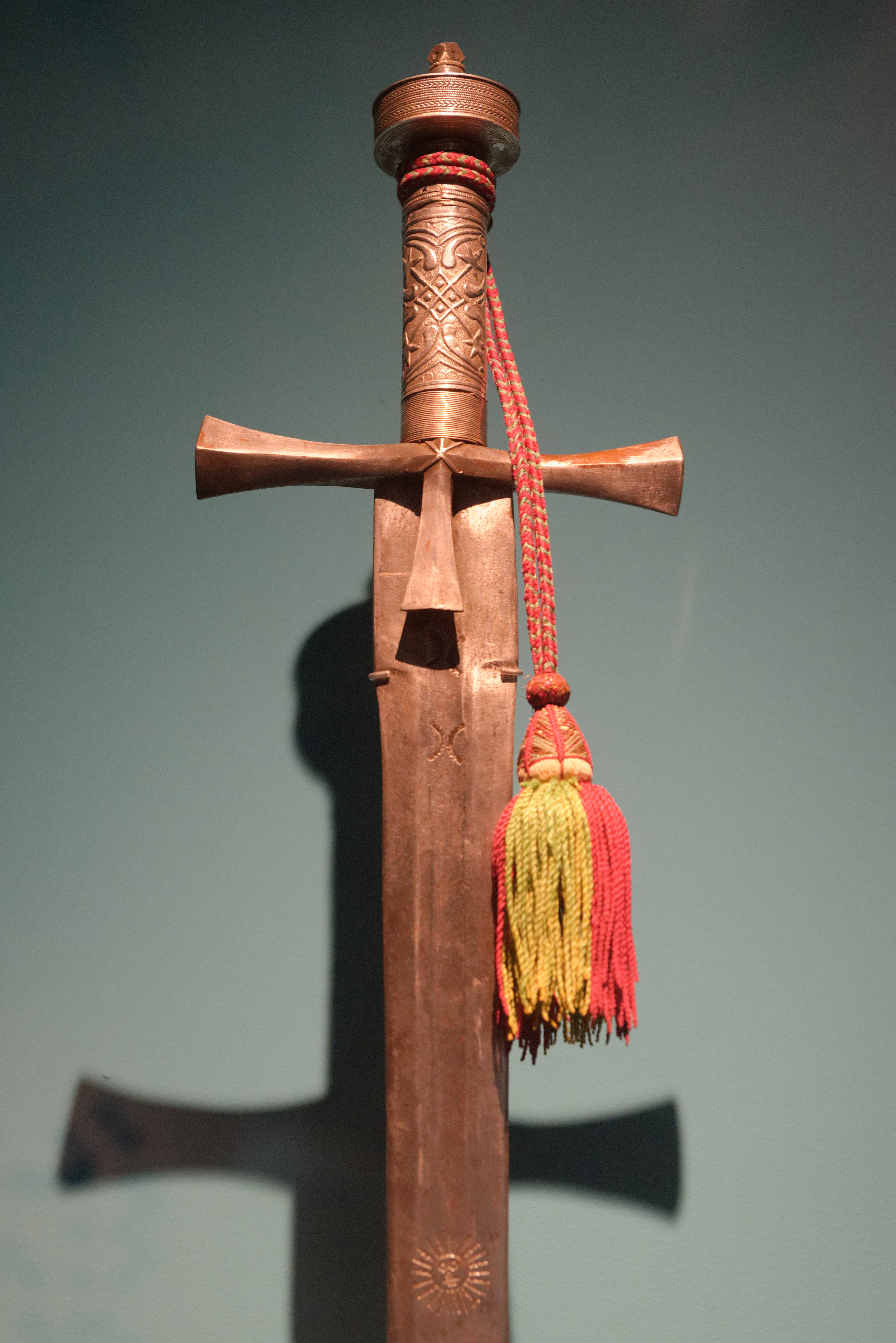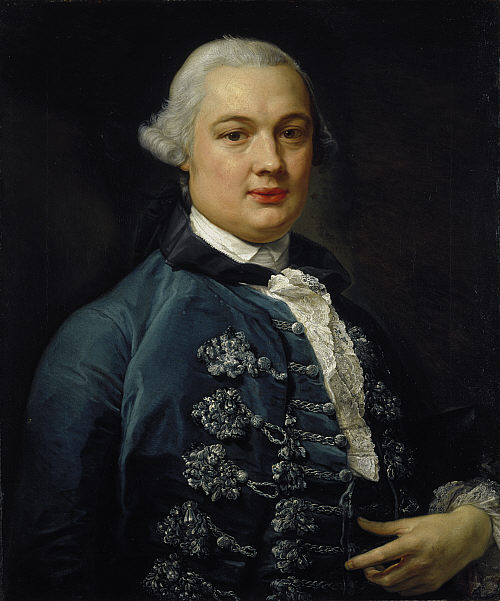|
Isma'il Of Sennar
Isma'il (1736–1776) was the ruler of the Kingdom of Sennar (). He was the son of king Badi IV, and brother of his predecessor Nasir. The Scottish traveller James Bruce was his unwilling guest from 1 May to 5 September 1772, and acted as a physician to Isma'il's three wives. Bruce left this portrait of Isma'il: : His head was uncovered; he wore his own short black hair, and was as white in colour as an Arab. He seemed to be a man about thirty-four, his feet were bare but covered by his shirt. He had a very plebeian In ancient Rome, the plebeians (also called plebs) were the general body of free Roman citizens who were not patricians, as determined by the census, or in other words " commoners". Both classes were hereditary. Etymology The precise origins of ... countenance, on which was stamped no decided character; I should rather have guessed him to be a soft, timid, irresolute man. Bruce summarized Isma'il's political position at the time of his visit as follows, based on c ... [...More Info...] [...Related Items...] OR: [Wikipedia] [Google] [Baidu] |
Kingdom Of Sennar
The Funj Sultanate, also known as Funjistan, Sultanate of Sennar (after its capital Sennar) or Blue Sultanate due to the traditional Sudanese convention of referring to black people as blue () was a monarchy in what is now Sudan, northwestern Eritrea and western Ethiopia. Founded in 1504 by the Funj people, it quickly converted to Islam, although this embrace was only nominal. Until a more orthodox Islam took hold in the 18th century, the state remained an "African empire with a Muslim façade". It reached its peak in the late 17th century, but declined and eventually fell apart in the 18th and 19th centuries. In 1821, the last sultan, greatly reduced in power, surrendered to the Ottoman Egyptian invasion without a fight. History Origins Christian Nubia, represented by the two medieval kingdoms of Makuria and Alodia, began to decline from the 12th century. By 1365 Makuria had virtually collapsed and was reduced to a petty kingdom restricted to Lower Nubia, until finally disapp ... [...More Info...] [...Related Items...] OR: [Wikipedia] [Google] [Baidu] |
Badi IV
Badi IV (reigned 1724–1762; died 1764), also known as Badi abu Shilluk, was a ruler of the Kingdom of Sennar. He was the son of his predecessor, Nul. When Emperor Iyasu II of Ethiopia invaded his realm in 1738, the army of Sennar under the leadership of Hamis, a prince of Darfur, inflicted a significant defeat of the invaders at the Battle of the Dindar River. He was deposed by his son, Nasir, with the help of his vizier Sheikh Adelan and his brother Abu Kalec the governor of Kordofan. Badi fled to sanctuary in Ethiopia, where ''Ras'' Mikael Sehul became his mentor. Ras Mikael convinced Emperor Iyoas I to appoint him governor of the province of Ras al-Fil, near the border with Sennar. However, despite the advice of ''Ras'' Wolde Leul, one of Iyoas' senior counselors, envoys from Sennar convinced Badi to return to Sennar where he was quietly murdered after an imprisonment of two years. The Scots explorer James Bruce adds that Badi was killed by Welled Hassan, the governor ... [...More Info...] [...Related Items...] OR: [Wikipedia] [Google] [Baidu] |
Nasir Of Sennar
Nasir () was a Hamaj regent under the Funj Sultanate of Sennar. He was the son of Badi IV, the previous ruler. He deposed his father Badi, with the help of the vizier Sheikh Adelan and his brother Abu Kalec the governor of Kordofan. Badi fled to sanctuary in Ethiopia, where Emperor Iyoas I appointed the deposed king governor of the province of Ras al-Fil, near the border with Sennar. However envoys from Sennar convinced Badi to return to Sennar where he was quietly murdered after an imprisonment of two years. Nasir was ritually executed in 1769 and succeeded by his brother Isma'il Ismail ( ar, إِسْمَاعِيْل, ʾIsmāʿīl) is regarded as a prophet and messenger and the ancestor to the Ishmaelites in Islam. He is the son of Ibrahim (Abraham), born to Hajar (Hagar). Ismail is also associated with Mecca and the ...J.M. Reid, ''Traveller Extraordinary: The Life of James Bruce of Kinnaird'' (New York: Norton, 1968), p. 246 Notes 1769 deaths 18t ... [...More Info...] [...Related Items...] OR: [Wikipedia] [Google] [Baidu] |
James Bruce
James Bruce of Kinnaird (14 December 1730 – 27 April 1794) was a Scottish traveller and travel writer who confirmed the source of the Blue Nile. He spent more than a dozen years in North Africa and Ethiopia and in 1770 became the first European to trace the origins of the Blue Nile from Egypt and Sudan. Early life James Bruce was born at the family seat of Kinnaird, Stirlingshire, and educated at Harrow School and Edinburgh University, and began to study for the bar, but his marriage to the daughter of a wine importer and merchant resulted in him entering that business instead. His wife died in October 1754, within nine months of marriage, and Bruce thereafter travelled in Portugal and Spain as part of the wine trade. The examination of oriental manuscripts at the Escorial in Spain led him to the study of Arabic and Ge'ez and determined his future career. In 1758 his father's death placed him in possession of the estate of Kinnaird. To North Africa On the outbreak of war ... [...More Info...] [...Related Items...] OR: [Wikipedia] [Google] [Baidu] |
Plebeian
In ancient Rome, the plebeians (also called plebs) were the general body of free Roman citizens who were not patricians, as determined by the census, or in other words " commoners". Both classes were hereditary. Etymology The precise origins of the group and the term are unclear, but may be related to the Greek, ''plēthos'', meaning masses. In Latin, the word is a singular collective noun, and its genitive is . Plebeians were not a monolithic social class. Those who resided in the city and were part of the four urban tribes are sometimes called the , while those who lived in the country and were part of the 31 smaller rural tribes are sometimes differentiated by using the label . (List of Roman tribes) In ancient Rome In the annalistic tradition of Livy and Dionysius, the distinction between patricians and plebeians was as old as Rome itself, instituted by Romulus' appointment of the first hundred senators, whose descendants became the patriciate. Modern hypotheses date ... [...More Info...] [...Related Items...] OR: [Wikipedia] [Google] [Baidu] |
Abu Likayik
Abu or ABU may refer to: Places * Abu (volcano), a volcano on the island of Honshū in Japan * Abu, Yamaguchi, a town in Japan * Ahmadu Bello University, a university located in Zaria, Nigeria * Atlantic Baptist University, a Christian university located in Moncton, New Brunswick, Canada * Elephantine, Egypt, known as Abu to the Ancient Egyptians * A. A. Bere Tallo Airport (IATA: ABU), in Atambua, Indonesia * Mount Abu, the highest mountain in the Indian state of Rajasthan People * Abu (Arabic term), a component of some Arabic names * Ab (Semitic), a common part of Arabic-derived names, meaning "father of" in Arabic * Abu al-Faraj (other) * Abu Baker Asvat, a murdered South African activist and medical doctor * Abu Ibrahim (other) * Abu Mohammed (other) * Abu Salim (other) *Abdul-Malik Abu (born 1995), American basketball player in the Israeli Premier Basketball League * Raneo Abu, Filipino politician Other uses * Abu (god), a minor god of v ... [...More Info...] [...Related Items...] OR: [Wikipedia] [Google] [Baidu] |
Adlan II
Adlan II (died 1789) was the ruler of the Kingdom of Sennar (1776 - 1789). He defeated the Vizier Rajab Rajab ( ar, رَجَب) is the seventh month of the Islamic calendar. The lexical definition of the classical Arabic verb ''rajaba'' is "to respect" which could also mean "be awe or be in fear", of which Rajab is a derivative. This month is re ... of Sennar and Fiki Haji Mohammed Majdub in the Battle of Taras in 1787.E.A. Robinson"Nimr, the Last King of Shendi" ''Sudan Notes and Records'', 8 (1925), p. 105. Notes 1789 deaths Rulers of Sennar 18th-century rulers in Africa Year of birth unknown {{Sudan-bio-stub ... [...More Info...] [...Related Items...] OR: [Wikipedia] [Google] [Baidu] |
1736 Births
Events January–March * January 12 – George Hamilton, 1st Earl of Orkney, becomes the first Field Marshal of Great Britain. * January 23 – The Civil Code of 1734 is passed in Sweden. * January 26 – Stanislaus I of Poland abdicates his throne. * February 12 – Francis I, Holy Roman Emperor marries Maria Theresa of Austria, ruler of the Habsburg Empire. * March 8 – Nader Shah, founder of the Afsharid dynasty, is crowned Shah of Iran on a date selected by court astrologers. * March 31 – Bellevue Hospital is founded in New York. April–June * April 14 – The Porteous Riots erupt in Edinburgh (Scotland), after the execution of smuggler Andrew Wilson, when town guard Captain John Porteous orders his men to fire at the crowd. Porteous is arrested later. * April 14 – German adventurer Theodor Stephan Freiherr von Neuhoff is crowned King Theodore of Corsica, 25 days after his arrival on Corsica on March 20. His reign ends on No ... [...More Info...] [...Related Items...] OR: [Wikipedia] [Google] [Baidu] |
1776 Deaths
Events January–February * January 1 – American Revolutionary War – Burning of Norfolk: The town of Norfolk, Virginia is destroyed, by the combined actions of the British Royal Navy and occupying Patriot forces. * January 10 – American Revolution – Thomas Paine publishes his pamphlet ''Common Sense'', arguing for independence from British rule in the Thirteen Colonies. * January 20 – American Revolution – South Carolina Loyalists led by Robert Cunningham sign a petition from prison, agreeing to all demands for peace by the formed state government of South Carolina. * January 24 – American Revolution – Henry Knox arrives at Cambridge, Massachusetts, with the artillery that he has transported from Fort Ticonderoga. * February 17 – Edward Gibbon publishes the first volume of ''The History of the Decline and Fall of the Roman Empire''. * February 27 – American Revolution – Battle of Moore's Creek Bridge: ... [...More Info...] [...Related Items...] OR: [Wikipedia] [Google] [Baidu] |
Rulers Of Sennar
A ruler, sometimes called a rule, line gauge, or scale, is a device used in geometry and technical drawing, as well as the engineering and construction industries, to measure distances or draw straight lines. Variants Rulers have long been made from different materials and in multiple sizes. Some are wooden. Plastics have also been used since they were invented; they can be molded with length markings instead of being scribed. Metal is used for more durable rulers for use in the workshop; sometimes a metal edge is embedded into a wooden desk ruler to preserve the edge when used for straight-line cutting. in length is useful for a ruler to be kept on a desk to help in drawing. Shorter rulers are convenient for keeping in a pocket. Longer rulers, e.g., , are necessary in some cases. Rigid wooden or plastic yardsticks, 1 yard long, and meter sticks, 1 meter long, are also used. Classically, long measuring rods were used for larger projects, now superseded by ta ... [...More Info...] [...Related Items...] OR: [Wikipedia] [Google] [Baidu] |




%2C_by_John_Trumbull.jpg)
